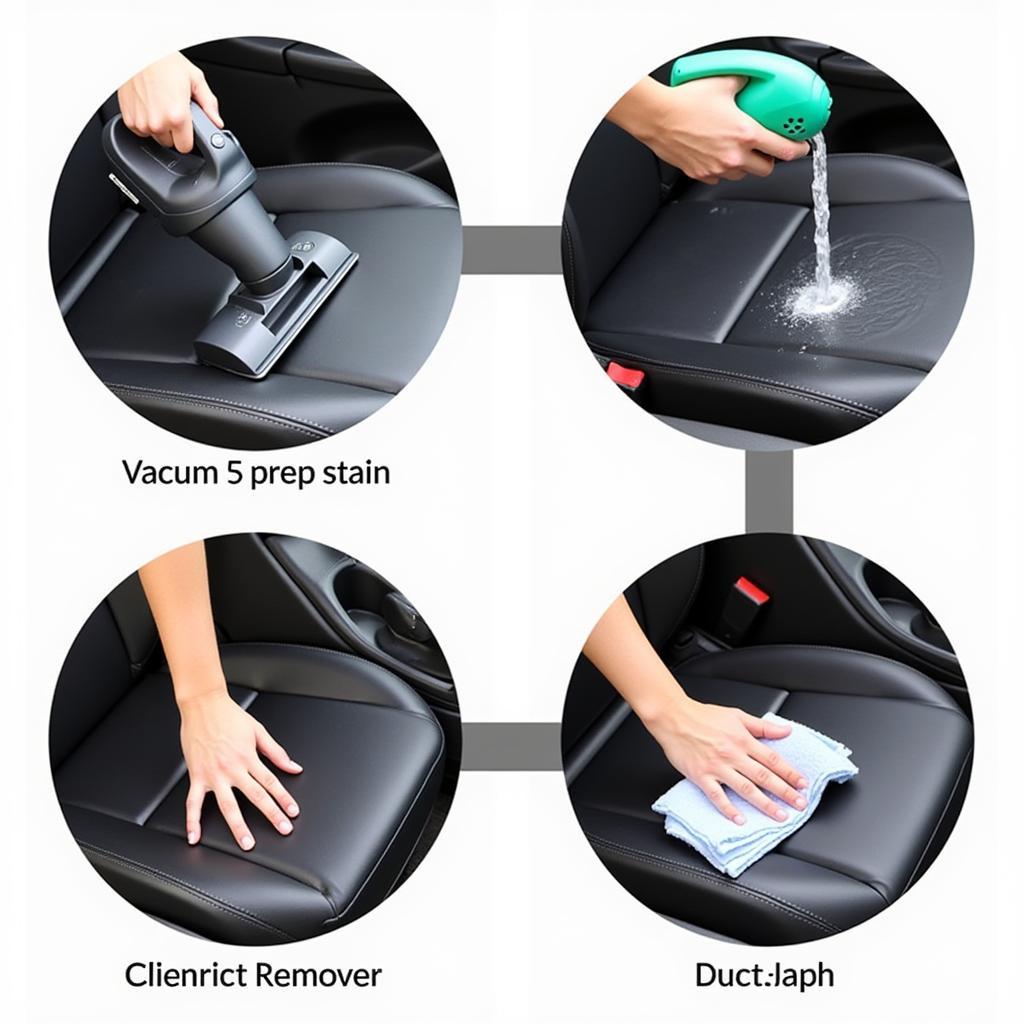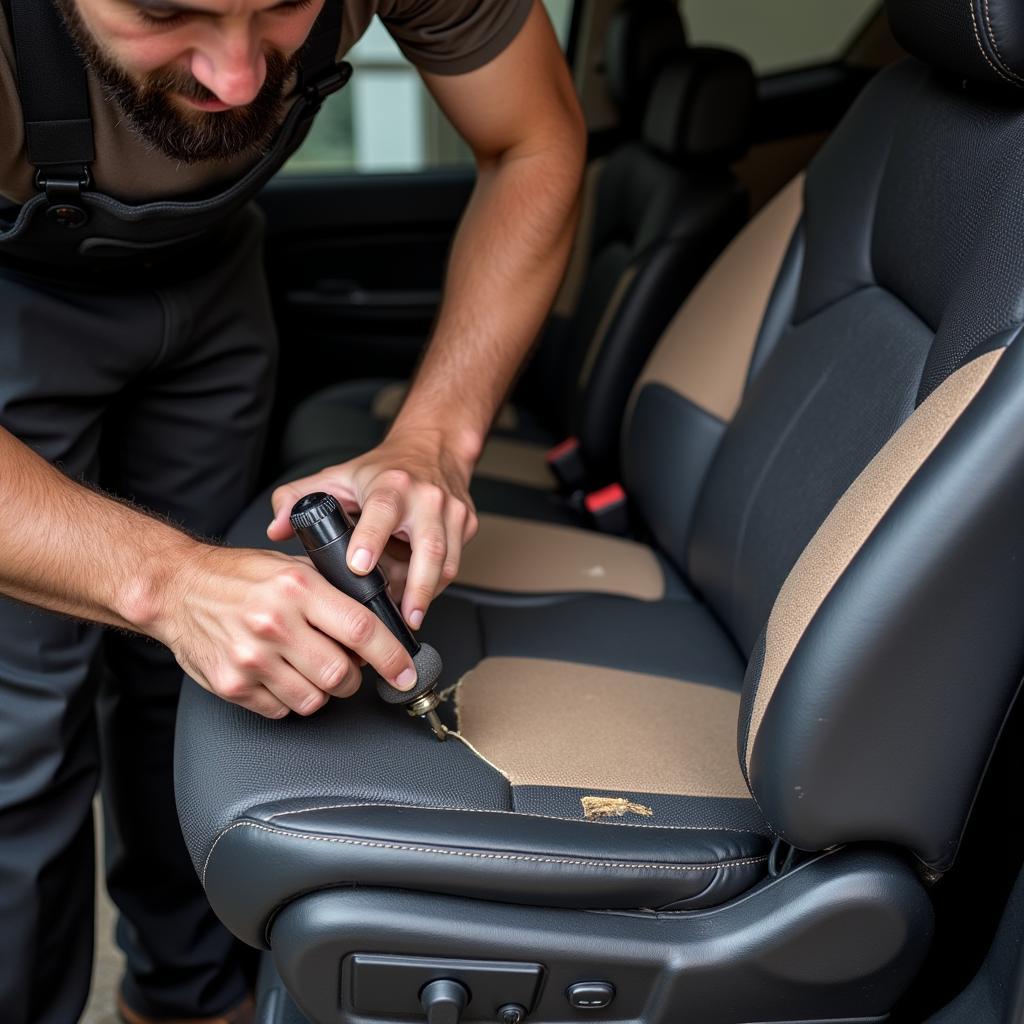Car seat cushions are an essential part of your vehicle’s comfort and safety. They support your back, provide cushioning, and help to reduce fatigue during long drives. Over time, car seat cushions can wear down, tear, or become damaged due to wear and tear, spills, or accidents. If you’re dealing with a faulty car seat cushion, don’t worry! We’ll guide you through the process of fixing it, covering common issues, troubleshooting tips, and DIY repair solutions.
Identifying Common Problems with Car Seat Cushions
Before diving into repair solutions, it’s crucial to pinpoint the exact problem with your car seat cushion. Here are some common issues you might encounter:
1. Tears and Rips:
- Causes: Frequent use, sharp objects, pets, and general wear and tear can lead to tears and rips in the fabric or foam of your car seat cushion.
- Symptoms: Visible tears, holes, or exposed foam.
2. Sagging and Compression:
- Causes: Over time, the foam inside car seat cushions can become compressed and lose its ability to provide proper support.
- Symptoms: Seat feels sunken, lacks support, and your body sinks in.
3. Stains and Discoloration:
- Causes: Spills, dirt, and general wear and tear can leave stains and discoloration on the car seat cushion fabric.
- Symptoms: Visible stains, discoloration, or unpleasant odors.
4. Broken Springs or Frames:
- Causes: Excessive weight, accidents, or age can damage the underlying spring system or frame of the car seat cushion.
- Symptoms: Noises, squeaking, or feeling that the cushion is unstable.
Troubleshooting Tips for Car Seat Cushion Problems
Once you’ve identified the problem, you can start troubleshooting and finding a solution:
- Inspect the Cushion: Thoroughly examine the cushion for any tears, rips, stains, or broken components.
- Check for Underlying Problems: Ensure that the problem with the cushion isn’t related to a deeper issue, such as a broken spring or a damaged frame.
- Consider the Severity: Determine if the issue is minor and can be easily repaired or if it requires more extensive work.
- Research Repair Options: Explore DIY repair solutions, professional repair services, or replacement options.
 Inspecting Car Seat Cushion for Damage
Inspecting Car Seat Cushion for Damage
DIY Car Seat Cushion Repair Solutions
For minor issues like tears, rips, or stains, DIY repair can be a cost-effective solution. Here are some DIY methods:
1. Repairing Tears and Rips:
- Use Fabric Glue: Apply fabric glue to the edges of the tear, carefully pressing the fabric together.
- Sew the Tear: Use a needle and thread, or a sewing machine, to stitch the tear closed.
- Patch the Tear: Cut a patch of matching fabric and secure it to the tear using glue or stitching.
2. Cleaning Stains and Discoloration:
- Vacuum the Cushion: Remove loose dirt and debris with a vacuum cleaner.
- Use a Stain Remover: Apply a fabric-safe stain remover according to the manufacturer’s instructions.
- Clean with a Damp Cloth: Wipe the cushion with a damp cloth to remove any remaining stains.
 Cleaning a Car Seat Cushion
Cleaning a Car Seat Cushion
3. Replacing Worn Foam:
- Remove the Cushion Cover: Carefully remove the cushion cover to access the foam.
- Purchase Replacement Foam: Find replacement foam with the correct dimensions and density.
- Insert the New Foam: Carefully insert the new foam into the cushion cover and reattach the cover.
When to Seek Professional Help
While DIY repairs can work for minor issues, some problems require professional help. If you encounter any of the following:
- Extensive Tears or Rips: Large or deep tears often require professional repair or replacement.
- Broken Springs or Frames: Fixing broken springs or frames requires specialized knowledge and tools.
- Complex Repairs: Repairing intricate car seat cushions or those with complex designs is best left to professionals.
 Professional Repairing a Car Seat Cushion
Professional Repairing a Car Seat Cushion
Expert Insight
“When dealing with car seat cushion issues, remember to assess the problem thoroughly before diving into repairs,” advises John Smith, an experienced automotive mechanic. “Some seemingly minor issues might require professional attention to ensure long-term durability and safety.”
Conclusion
Fixing a faulty car seat cushion can be a straightforward process, especially for minor issues. However, if you encounter more complex problems, it’s wise to seek professional help to avoid further damage or potential safety risks. By following these guidelines, you can ensure your car seats remain comfortable and safe for years to come.
For further assistance or to schedule a repair service, please contact AutoTipPro at +1 (641) 206-8880 or visit our office at 500 N St Mary’s St, San Antonio, TX 78205, United States.
FAQ
1. Can I use household cleaners on my car seat cushions?
It’s best to avoid using harsh chemicals or abrasive cleaners as they can damage the fabric or foam. Stick to mild, fabric-safe cleaners.
2. How often should I clean my car seat cushions?
Aim to clean your car seat cushions at least once a month or more frequently if needed. This helps remove dirt, grime, and stains that can affect the lifespan of the cushion.
3. What are some tips for preventing car seat cushion damage?
- Avoid placing sharp objects on your car seat.
- Regularly clean your car seat cushions.
- Protect your car seat cushions from spills.
- Don’t overload your car seats.
4. Can I replace my car seat cushion with a universal one?
Universal car seat cushions are available, but they may not be a perfect fit for your car’s specific model. Consider contacting a professional for advice on finding the right replacement.
5. What are some signs that my car seat cushion needs to be replaced?
- If the cushion is excessively worn or damaged.
- If the cushion is no longer providing adequate support.
- If the cushion is emitting an unpleasant odor.
6. Can I remove the foam from my car seat cushion to clean it?
Removing the foam is possible, but it’s generally not recommended. The foam can be difficult to reinsert, and you risk damaging the cover or underlying structures.







Leave a Reply